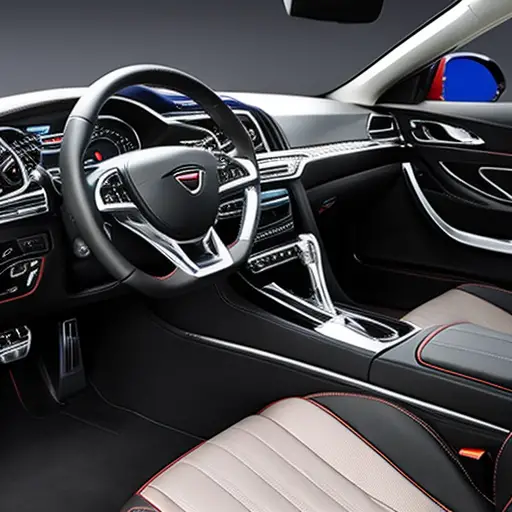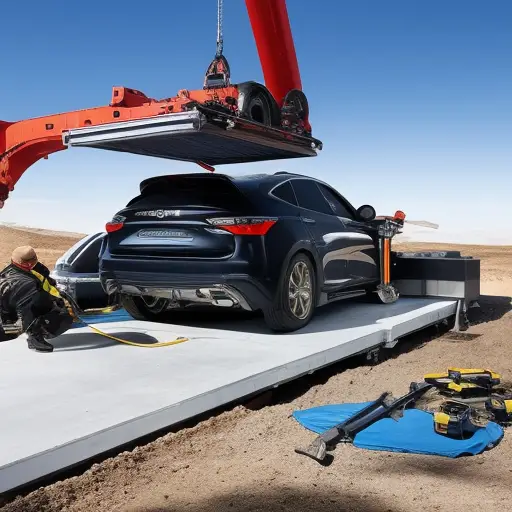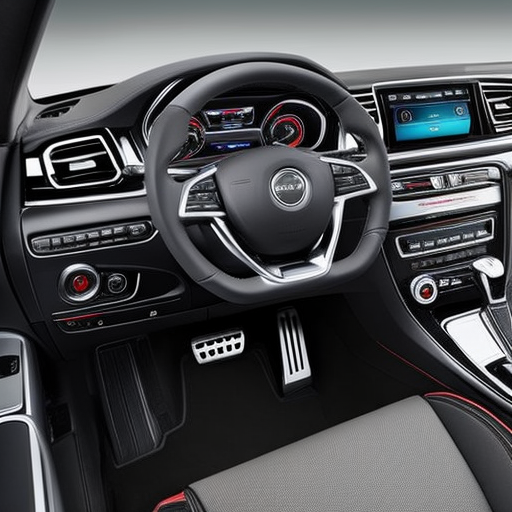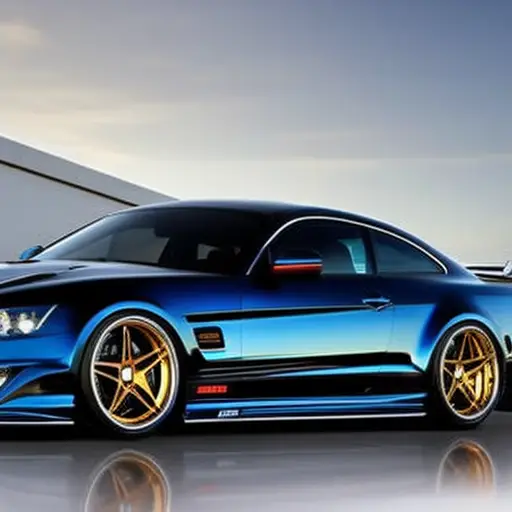The Role of 3D Printing in Car Mods
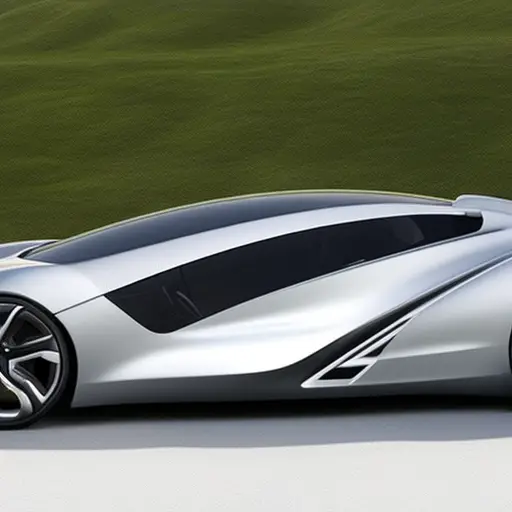
Did you know that the global automotive 3D printing market is projected to reach $1.56 billion by 2025?
3D printing technology is revolutionizing car modifications, offering unparalleled customization and performance enhancements.
From interior upgrades to exterior components, 3D printing is empowering car enthusiasts to create unique, bespoke designs while reducing material waste.
This article explores the myriad benefits and future potential of 3D printing in automotive customization.
Advantages of 3D Printing in Car Mods
One significant advantage of 3D printing in car mods is the ability to create custom and precise components with minimal material waste. This technology allows for cost-effective solutions by producing parts on-demand, eliminating the need for large-scale manufacturing and excess inventory.
Design flexibility is another key benefit, as 3D printing enables the creation of intricate and complex shapes that may be challenging or even impossible to achieve using traditional manufacturing methods. This flexibility extends to the customization of parts, where specific requirements can be easily accommodated without the need for expensive tooling or retooling.
With 3D printing, car enthusiasts can rapidly prototype and iterate designs, reducing the time and resources typically associated with traditional manufacturing processes. Furthermore, the ability to utilize a wide range of materials, including high-performance polymers and composites, provides additional options for creating lightweight and durable components.
Customization Opportunities With 3D Printing
Exploring the customization opportunities offered by 3D printing enhances the potential for unique and tailored modifications in car design and performance.
One of the key advantages of 3D printing in car mods is the design flexibility it provides. With 3D printing, car enthusiasts can create intricate and personalized parts that may not be feasible with traditional manufacturing methods. This means that individuals can customize their vehicles to a much greater degree, allowing for a truly unique end product.
Additionally, 3D printing allows for the use of a wide range of materials, offering varying degrees of durability. This means that parts can be tailored to specific needs, whether it be high-temperature resistance or enhanced structural integrity. The ability to customize the material used in 3D printing allows for a more tailored approach to car modifications, ensuring that components are not only unique but also durable and fit for purpose.
This level of customization and material durability sets the stage for a new era in car modification, where nearly any design can be brought to life with the help of 3D printing. The impact of these 3D printed parts on performance will be further explored in the following section.
Impact of 3D Printed Parts on Performance
How does the integration of 3D printed parts affect the overall performance of modified cars?
The impact of 3D printed parts on performance is significant in the realm of car modifications.
One key aspect is material durability, which directly influences the performance of the vehicle. 3D printing allows for the creation of parts using high-strength materials, such as carbon fiber-infused filaments, enhancing the durability of components and positively impacting performance.
Moreover, weight reduction is another critical factor. Lightweight 3D printed parts contribute to the overall reduction of the vehicle’s weight, leading to improved speed, agility, and fuel efficiency.
Additionally, the structural integrity of 3D printed parts plays a pivotal role in performance. These parts can be designed with complex geometries that optimize strength and rigidity, thereby enhancing the overall performance of the vehicle.
3D Printed Interior Enhancements
3D Printed interior enhancements play a vital role in customizing and upgrading the interior aesthetics and functionality of modified cars. One of the significant advantages of 3D printing in car interior customization is the ability to create customizable dashboards.
3D printing allows car enthusiasts to design and produce dashboards tailored to their specific preferences, incorporating unique features such as integrated gadget mounts, personalized logos, or specialized compartments for storage. This level of customization is not easily achievable through traditional manufacturing methods, making 3D printing a game-changer in the realm of interior car mods.
Moreover, 3D printing also enables the creation of bespoke printed seat covers. These seat covers can be tailored to fit the exact dimensions of the car seats, ensuring a perfect and seamless fit. Additionally, the design possibilities are virtually limitless, allowing for intricate patterns, textures, and even personalized monograms to be incorporated into the seat covers. This level of personalization adds a touch of individuality to the car’s interior, elevating the overall aesthetic appeal.
In essence, 3D printing empowers car modifiers to transform and enhance the interior of their vehicles with unparalleled customization and precision.
Exterior Upgrades Using 3D Printing
When it comes to exterior upgrades using 3D printing, the possibilities are vast. Customizable body paneling allows for unique designs and personalization, while functional aerodynamic enhancements can improve the overall performance of a vehicle.
These points highlight the potential for 3D printing to revolutionize the way car enthusiasts modify and enhance the exterior of their vehicles.
Customizable Body Paneling
Utilizing customizable body paneling through 3D printing technology revolutionizes exterior upgrades in the automotive industry. This innovation offers unparalleled customization options, allowing car enthusiasts to create unique designs that reflect their individual style. 3D printing also enables the use of advanced materials, ensuring superior material durability compared to traditional manufacturing methods. The table below provides a comparison of traditional body paneling methods and 3D printing technology, highlighting the advantages of the latter in terms of customization and material durability.
| Aspect | Traditional Body Paneling | 3D Printed Body Paneling |
|---|---|---|
| Customization | Limited design options | Unlimited design freedom |
| Material Durability | Susceptible to corrosion | Enhanced durability |
This comparison underscores the significant benefits of 3D printing in creating customizable and durable body paneling for automotive modifications.
Functional Aerodynamic Enhancements
Leveraging advanced 3D printing technology, car enthusiasts can achieve functional aerodynamic enhancements for exterior upgrades with precision and efficiency.
3D printed spoilers, for instance, offer the advantage of being customized to the vehicle’s specific aerodynamic needs. These spoilers can be designed with intricate aerodynamic features that optimize airflow, thereby enhancing aerodynamic efficiency and improving overall vehicle performance.
By utilizing 3D printing, car modders can create complex geometric shapes that are otherwise challenging to manufacture using traditional methods. This allows for the production of aerodynamic enhancements that are not only visually striking but also highly effective.
The ability to fabricate these components with precision ensures that they seamlessly integrate with the vehicle’s body, maximizing their aerodynamic benefits.
Transitioning into the subsequent section, it is important to explore the environmental benefits of 3D printed car mods.
Environmental Benefits of 3D Printed Car Mods
How can 3D printed car mods contribute to environmental sustainability in the automotive industry?
- Reduced Material Waste: 3D printing allows for precise material usage, minimizing waste compared to traditional manufacturing methods.
- Lightweight Design: Custom 3D printed car mods can be designed to be lightweight, improving fuel efficiency and reducing carbon emissions.
- Localized Production: By enabling on-demand manufacturing, 3D printing reduces the need for long-distance transportation of car mod parts, cutting down on emissions.
- Recyclable Materials: Utilizing recyclable materials in 3D printing further enhances the sustainability benefits of car mods, promoting a circular economy.
3D printed car mods offer significant sustainability benefits by promoting material efficiency, reducing waste, and minimizing environmental impact. Through the adoption of 3D printing technology, the automotive industry can take strides towards a more eco-friendly and sustainable future.
Future Potential of 3D Printing in Automotive Customization
3D printing technology is increasingly becoming a crucial component in the future of automotive customization.
The future potential of 3D printing in this field lies in its ability to significantly enhance manufacturing efficiency and design flexibility. With 3D printing, automotive parts and components can be produced with reduced material waste and improved production speed, leading to enhanced manufacturing efficiency.
This is particularly beneficial for custom car modifications, as it allows for the creation of unique and personalized parts tailored to individual preferences. Additionally, 3D printing enables unparalleled design flexibility, allowing for intricate and complex shapes to be manufactured with ease.
This opens up new possibilities for innovative car modifications, enabling the creation of lightweight and aerodynamic components that were previously challenging to produce using traditional manufacturing methods.
As the technology advances, the future of automotive customization is poised to be revolutionized by the transformative capabilities of 3D printing, offering endless opportunities for creative and functional enhancements to vehicles.
Frequently Asked Questions
Can 3D Printing Be Used to Create Custom Car Parts for Vintage or Rare Vehicle Models?
Custom car parts for vintage or rare vehicle models can be created using 3D printing. This technology offers customization options and design flexibility, allowing for unique materials to be used in the printing process.
Are There Any Limitations to the Size or Complexity of Parts That Can Be 3D Printed for Car Mods?
When considering 3D printing for car mods, it’s essential to acknowledge potential limitations in part size and complexity. These factors can impact the feasibility and practicality of utilizing 3D printing for custom parts in vintage cars.
How Does the Cost of 3D Printed Car Mods Compare to Traditional Manufacturing Methods?
When comparing the cost of 3D printed car mods to traditional manufacturing methods, it’s essential to consider custom parts and vintage models. 3D printing offers cost-effective production, particularly for unique or obsolete components.
Are There Any Safety or Durability Concerns With Using 3D Printed Parts in a Car’s Exterior or Interior?
Safety concerns and material durability are significant considerations when using 3D printed parts in a car’s exterior or interior. Ensuring regulatory compliance and rigorous testing for impact and stress resistance is crucial to address these concerns.
What Are the Legal Considerations for Using 3D Printed Car Mods, Such as Compliance With Vehicle Regulations and Insurance Coverage?
When considering using 3D printed car mods, it’s crucial to address the legal implications, ensuring compliance with vehicle regulations and potential impacts on insurance coverage. These factors are integral to the safety and legality of modifications.
Conclusion
In conclusion, the role of 3D printing in car modifications offers numerous advantages. One of the main benefits is the customization opportunities it provides. Car enthusiasts can now personalize their vehicles to reflect their own unique style and preferences. They can create custom parts and accessories that are tailored to their specific needs.
Another advantage of 3D printing in car modifications is the performance impact it can have. By using lightweight and durable materials, such as carbon fiber, 3D printed parts can improve a car’s performance. This can lead to better acceleration, handling, and overall driving experience.
Furthermore, 3D printing can also enhance the interior of a car. Customized interior components, such as dashboard panels or center consoles, can be created using 3D printing technology. This allows for a more personalized and luxurious interior space.
In addition to interior enhancements, 3D printing can also be used for exterior upgrades. Car enthusiasts can design and print their own body kits, spoilers, or even entire car bodies. This not only allows for unique and eye-catching designs but also reduces the cost and time associated with traditional manufacturing processes.
Lastly, 3D printing in car modifications offers environmental benefits. By using additive manufacturing techniques, less waste is produced compared to traditional manufacturing methods. Additionally, 3D printing can utilize recycled materials, further reducing its environmental impact.
With the potential for future advancements in automotive customization, 3D printing is revolutionizing the way car enthusiasts modify their vehicles. It is estimated that by 2025, over 10% of all car parts could be 3D printed, showcasing the significant impact of this technology on the automotive industry.


